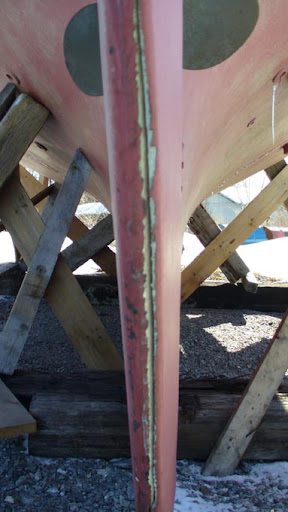Waterlogged rudders seem to be a common condition with the W32's. The rudder has about 20 through-bolts where water can gain entry. If you search the archives (Jack Web's site) you will find several threads discussing the rudder issue. Wether it's a problem is debatable. In warm climates it's probably less of an issue, or a non-issue, considering that there are a lot of 30+ yr old rudders out there still functioning.
If you haul out for the winter in a frozen climate, the water inside will expand as it freezes and can split the rudder open. I think this accelerates the delamination process, although the rudder is so overbuilt that it still works. If you are hauling out where it is likely to freeze, it's probably a good idea to have a way to drain out as much water as you can before it freezes. The foam holds a lot of water and is near impossible to dry out. I had my rudder split open in my shop for 6 months over the winter 2 years ago. I finally just removed the soaking wet foam which weighed about 100lbs.
Split rudder after a winter freeze:

I've decided to build a new rudder:
